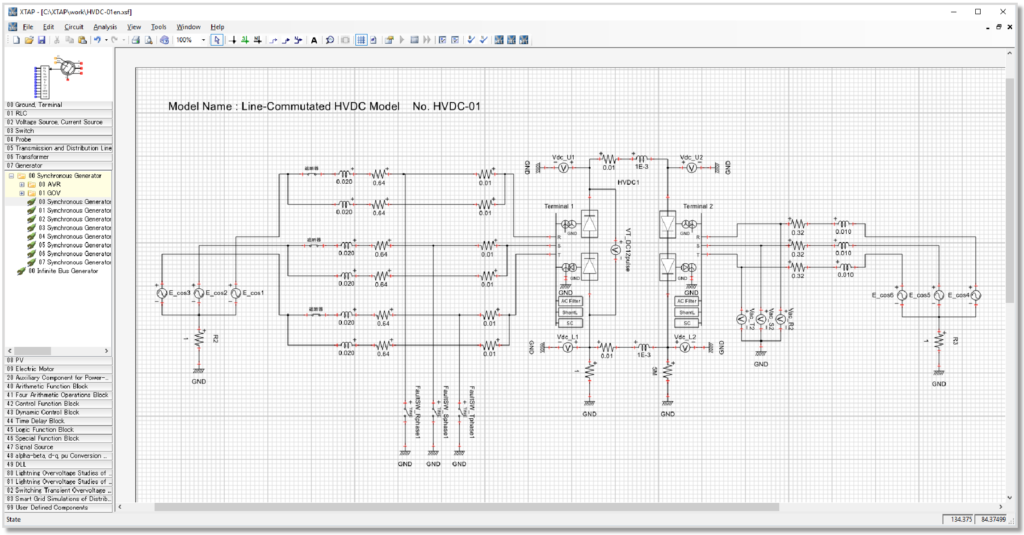What is XTAP?
XTAP, which stands for eXpandable Transient Analysis Program, is a computer program for the waveform-level simulation of power systems. In the field of power system analysis, the waveform-level simulation is often referred to as the electromagnetic transient (EMT) simulation.
XTAP is one of the major EMT simulation programs. XTAP can be used not only for traditional EMT simulations such as overvoltages, inrush currents and abnormal oscillations occurring in power systems but also for new simulation needs which include assessment of various power quality problems and performance studies of power-electronics converters used in HVDC (high voltage direct current) systems and FACTS (flexible ac transmission systems) devices. Studies related to power-electronics converters used in renewable energy interconnections are also included.
XTAP uses accurate and numerically robust algorithms developed by recent research activities and is equipped with a user-friendly graphical interface. It is available free of charge and can be obtained from the download page of this site.
In Japan, all utility companies use XTAP as their standard tool, and major manufactures, universities and research institutes form a user community.
Applications
- Switching and lightning overvoltages, transformer inrush currents, induction motor/generator inrush currents, ferroresonance, subsynchronous resonance (SSR), and black-start overvoltages.
- Various power quality problems such as harmonics, flicker, and voltage interruptions/drops/swells.
- Performance studies of power-electronics converters used in HVDC systems and FACTS devices and also for renewable energy and energy storage interconnections.
- Dynamic simulations of microgrids and distribution systems for the coordination of renewable energy generators such as PV and wind power, energy storage devices such as BESS and EV, and network regulation devices.
Graphical User Interface
XTAP’s graphical user interface (GUI) allows the user to create a simulation case by intuitively arranging and interconnecting electrical and control components. A comprehensive component library is fully pre-equipped, and the user is even able to create user-defined models. The GUI is equipped with various supporting tools such as a waveform plotting tool, a line/cable canstants calculation tool, and so on.


Models
- Comprehensive electrical and control components
- Synchronous generator model including saturation and torsional synamics
- Transmission line models (π, constant-parameter and frequency-dependent)
- Transformer models (2, 3-winding and autotransformers)
- Power-electronics converters (line-commuted, PWM, and MMC)
- Photovoltaic (PV) power generation systems and wind power generation system
- DLL-defined blocks
References
- T. Noda, K. Takenaka and T. Inoue, “Numerical Integration by the 2-Stage Diagonally Implicit Runge-Kutta Method for Electromagnetic Transient Simulations,” IEEE Trans. on Power Delivery, Vol. 24, No. 1, pp. 390-399, Jan. 2009. [IEEExplore]
- Chapter 5 “XTAP”, Numerical Analysis of Power System Transients and Dynamics, The Institution of Engineering and Technology (IET), 2015. [Amazon]
